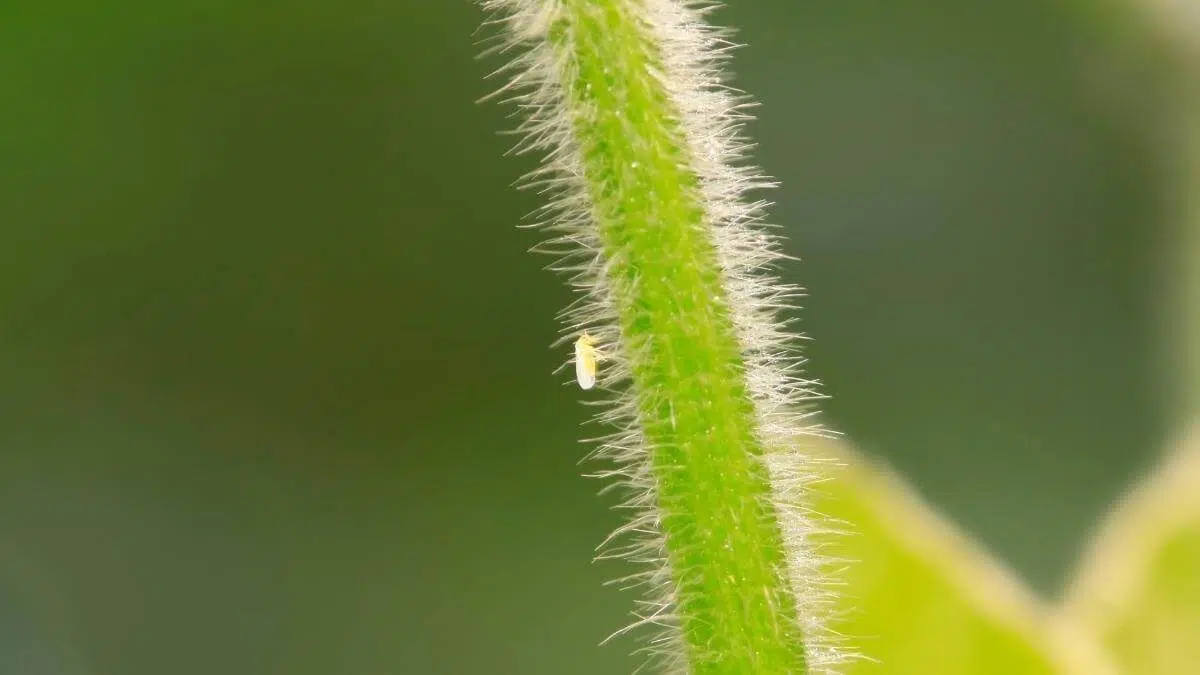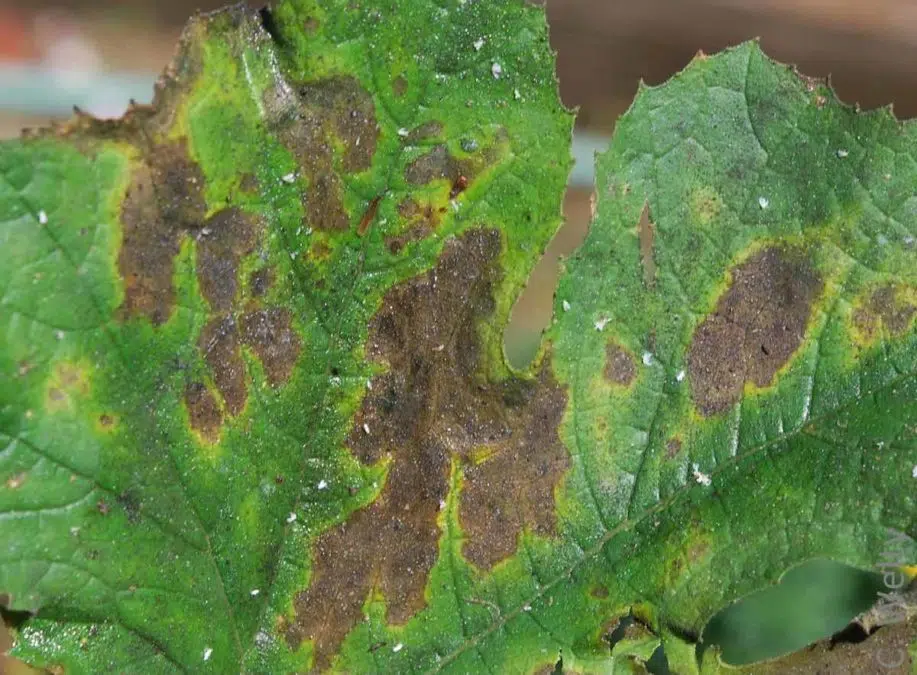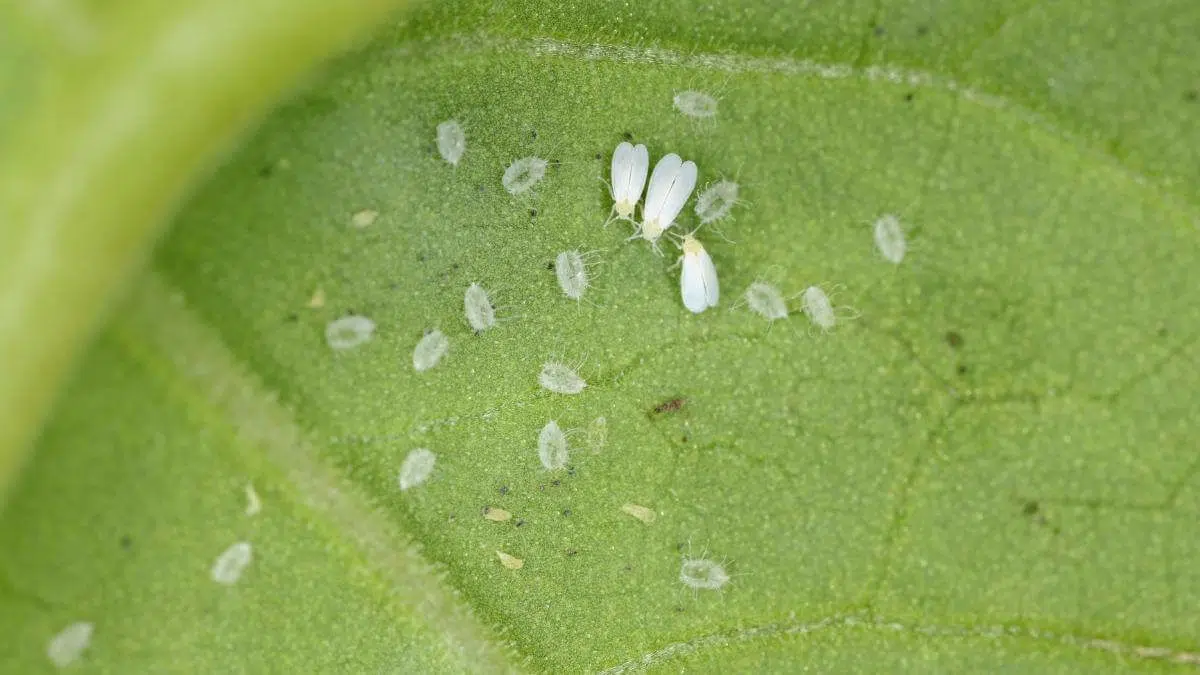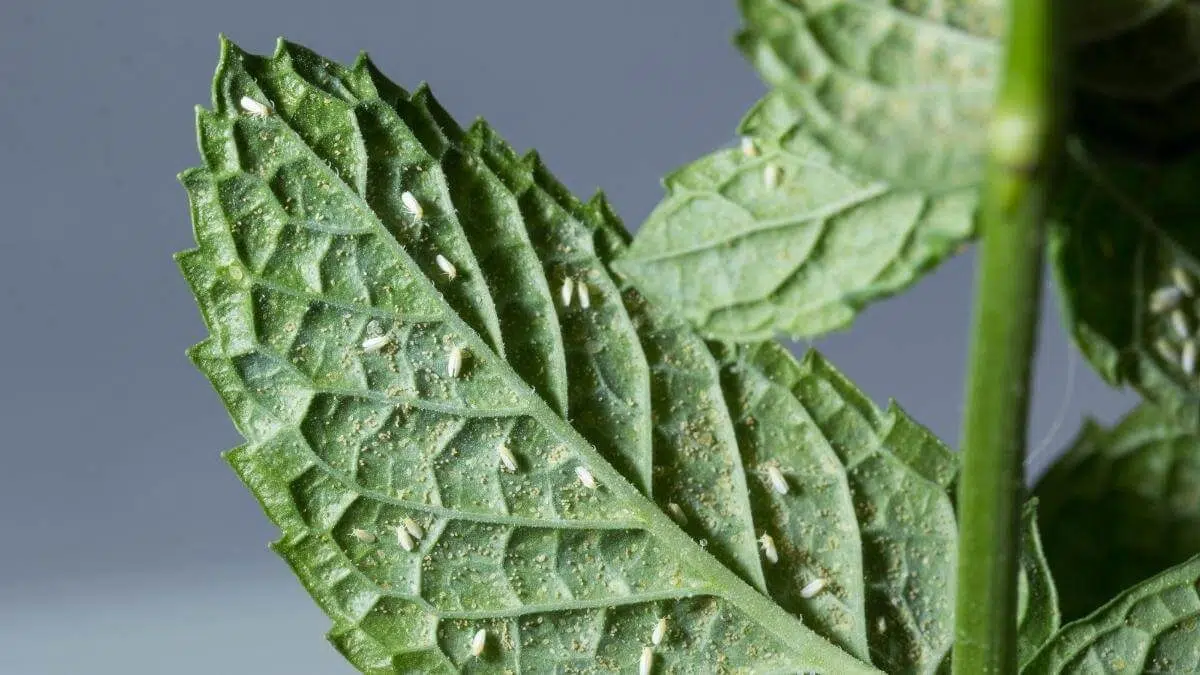It’s really frustrating to come out to the garden and notice that a pest has started moving in on your plants. After all, you’re the one who put in the hard work to grow them!
If you see white bugs on your basil plants, you might be dealing with a whitefly infestation. Whiteflies are like little tiny moths that can infest your plants and cause quite a bit of damage if left unchecked.
How to Get Rid of Whiteflies on Basil Plants
While there are a lot of options for getting rid of whiteflies on your plants, the two that stand out as the best options are horticultural oils and neem oil. They are great methods for being able to control whiteflies in the garden.
1. Horticultural Oils
Ultrafine horticultural oil sprays can be effective for removing whiteflies, but make sure to thoroughly spray the plants as they only really work on contact. Apply as a foliar spray (on the leaves) in the morning, or when the weather does not get above 75 degrees Fahrenheit.
Horticultural oils and soaps are a great option, but just know that once these dry they don’t help at all, so it’s really the initial contact with the pests that will kill spider mites.
These don’t work on eggs, so you want to re-apply after 2-3 days once those eggs have all hatched.

2. Neem Oil
Neem oil is another option for helping to control spider mites and it is my favorite. Unlike some other options, neem oil can attack eggs and larvae as well as adults, so it’s more effective on a broad scale.
Neem oil is effective at controlling populations, even after the initial application as the oil can get into the soft-bodied insects and cause damage.
You want to reapply about every 2 weeks, but that’s a lot less than some other methods of controlling mites.
100% cold-pressed neem oil that can be used as a foliar spray for healthy garden plants. Free of water and other additives.
3. Insecticidal Soap
You can purchase insecticidal soaps like this one that will help with getting rid of aphid colonies.
You can also make your own DIY soap with a few ingredients:
- Dish soap (natural, free of perfumes)
- Water
- Vegetable oil
- Spray bottle
Make sure you’re using a dish soap that doesn’t contain a lot of harmful chemicals – we are spraying this on your plants that you’ll eventually eat and those additives can also impact plant growth.
Add 1 teaspoon of soap and 1 teaspoon of oil, to a half-gallon of water and spray on the plants. Since most aphids are found on the bottom side of the mint plant leaves, start by spraying there.
The soapy water will suffocate the aphids and they will eventually fall off the plant.
4. Attracting Predatory Insects
Whiteflies are a great meal for lacewings, beetles, parasitic wasps, and predatory mites.
Do not use pesticides if you want to attract some of these beneficial insects and natural predators.
5. Yellow Sticky Traps
While yellow sticky traps aren’t going to fully take care of the whitefly population, it will alert you to how big your problem might be.
These will help keep the whitefly population from exploding, but I wouldn’t use these as a standalone method for getting rid of whiteflies on basil leaves.
What are Whiteflies?
Scientific Name: Trialeurodes vaporariorum
Other names: Glasshouse whitefly, greenhouse whitefly
There are thousands of whitefly species, but the most common one you’ll find in the garden is the Silverleaf whitefly. If you’re growing in the greenhouse or in high tunnels, the glasshouse whitefly is another common culprit.
Whiteflies feed on the sap in the plant’s leaves, and if your plants are overly infested with them it can cause a lot of plant damage. Additionally, they can transfer diseases to other plants, which can spread issues throughout the whole garden.
According to the Colorado State University Extension, whiteflies can be found on over 250 vegetable plants and ornamentals. But they are commonly found on:
- Cucumbers and other cucurbits
- Tomatoes
- Grapes
- Beans
- Calendula
- Begonias
- Poinsettia
- Hibiscus
How to Tell if Whiteflies are Feeding on Your Plants
While you might suspect that whiteflies are what is causing the damage to your plants, it’s nice to be sure.
Aphids are another white bug you might see on your basil plants. So let’s walk through a few ways to tell which bug is actually causing the issues and what you can do about it.

What Whitefly Damage Looks Like
Whiteflies leave behind honeydew, or sooty mold, similar to the trail left by aphids. This sticky substance can cause additional damage to the plants on top of them sucking the sap and plant juices from the leaves.
Signs of whitefly damage include:
- Yellowing or brown leaves
- Whitening of leaves
- Abnormal leaf growth
- Dead areas of leaves
- Dwarfed or stunted growth
Whitefly Larva and Growth Stages
A full cycle of whiteflies from eggs into adults is around 4 weeks during the summer months.

The growth stages of the whitefly are:
- Whitefly eggs – laid on the bottom side of leaves; 4-12 days until they hatch
- Nymphs/crawlers –
- Whitefly Adults – After 3-6 weeks, whiteflies will have gone through the entire life stage cycle and the adults will be more prevalent.
Whitefly eggs are more of a cone shape and are yellowish in color that can turn to a purple/gray as they get closer to hatching.
Whitefly nymphs are more of a pale green color, but can also be yellow or dark brown. They look like miniature versions of adult whiteflies. The nymphs can leave behind a powdery white waxy substance as they start moving around and feeding.
Adult whiteflies only get to be around 1.5 mm long and look like small white moths. They aren’t much larger than the eggs or nymphs, but they are more pronounced and easier to spot.
How to Prevent Whiteflies
Preventing whiteflies in the first place is important for reducing the annoyance of them taking over your basil plant.
Check Your Leaves and Fruit Regularly
Whiteflies usually start appearing on the lower leaves of plants, working their way up as they need more space. This is a great place to start your search when you check for whiteflies. The underside of leaves is where you’ll initially find whiteflies as that’s where they lay their eggs on your plants.

While they can be hard to see with the human eye, you can use a magnifying glass or small hand magnifier to check the leaves for whiteflies. Continuous checking of plants throughout the season is one of the best methods for whitefly control.
Control Weeds in the Garden
Weeds are no fun for gardeners. While it’s an annoying job, it’s super important to keep them at bay because they house many pests, including whiteflies. Weed management can help reduce them traveling throughout the garden.
Solanum Nigrum, or black nightshade, is a regular host for spider mites, so if you have these in the garden, it’s important to keep them under control.
Remove Infested Plants After Harvest
If you had a whitefly infestation during the garden season, you probably want to get rid of those crops altogether. You can burn them, or find other creative ways to destroy them, but whatever you do, don’t put them in the compost pile.
Whiteflies can’t usually overwinter in USDA Hardiness Zones 7 or above, but if you’re in a more tropical region they can come back next year, so take precautions and just get rid of the plants. This is also the reason you might find whiteflies on your indoor plants since the temperatures are much warmer inside than out during winter.
Frequently Asked Questions About Whiteflies on Basil
Will Whiteflies Hurt Basil Plants?
Whiteflies can definitely do damage to your basil plant if left unchecked.
You will start to see brown or yellow spots on your basil plant’s leaves, and eventually, the leaves will begin to die. Whiteflies feed on the sap in the cells of the leaf, which is what causes those discolored spots in the first place.
Using neem oil or spraying your plants when you find whiteflies on the leaf surface can help mitigate the damage to your basil.
Can Vinegar Get Rid of Whiteflies?
Insecticidal soap is a common method for getting rid of whiteflies, and it often involves a few teaspoons of white vinegar. The full recipe is above, but you’ll want to spray the underside of the leaves of your plants to make sure you’re reaching the whole population.
How Do You Get Rid of White Bugs on Basil Plants?
Whiteflies and white aphids are two common white bugs you’ll find in the garden. You can get rid of both using neem oil or horticultural oil, but be careful as these applications do impact beneficial insects as well.
How Do You Get Rid of Whiteflies Naturally?
The only real “natural” way to do it is to attract predatory insects to the whitefly, like lacewings and certain parasitic wasps. If you’re looking for a spray, you can use horticultural or neem oil to take care of the problem after a few applications.




